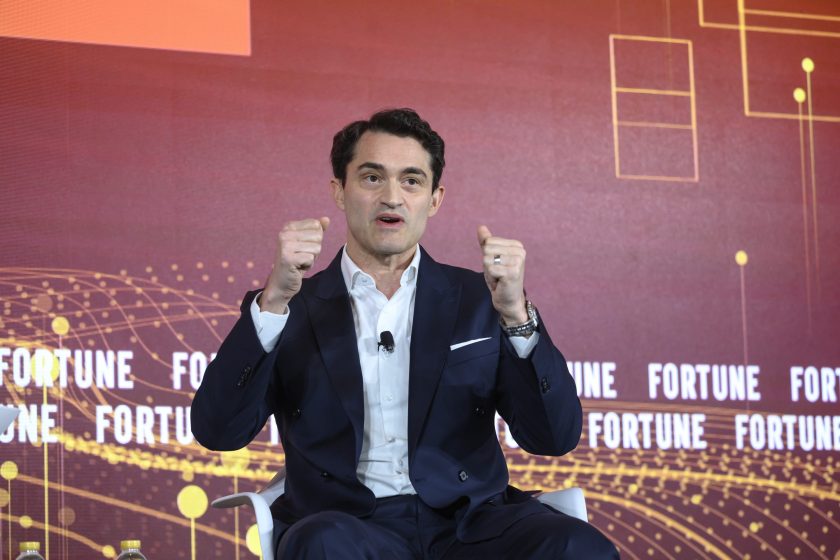
Francis Belin, Christie’s Asia-Pacific president, sees AI art generators as just another step in “art history. Lucas Schifres for Fortune
AI-generated artwork has garnered controversy since the debut of image-generating tools like Stable Diffusion and Midjourney. Artists complain that these AI models are trained on giant datasets of copyright protected artwork—without permission from the copyright holder—allowing any user to effectively copy a creator’s trademark style with just a text prompt. A group of visual artists are even trying to take developers to court, accusing them of serving as “copyright-laundering devices, promising customers the benefits of art without the costs of artists.”
But Francis Belin, Christie’s president for Asia-Pacific, doesn’t buy those arguments. “I struggle logically, and struggle to understand how using a large data set, which is the whole point of AI—how will you be able as the owner of a certain piece of intellectual property to claim your rights?” he said on Wednesday at Fortune’s Brainstorm Design conference in Macau, China.
Governments are now trying to figure out how old rules on copyright and intellectual property now apply to AI-generated artwork. U.S. courts currently argue that artists who use tools like Midjourney don’t deserve copyright protections, alleging the generated artwork does not have a human author. Beijing courts, on the other hand, ruled last week in favor of granting copyright protections to a creator of AI art.
Belin noted that “generative art” predates the creation of AI artwork generators. The movement grew from artists telling themselves “I don’t want to rely solely on my culture, on my brain, on my emotions, and trying to extract myself as an artist from the system in which I grew,” Belin explained.
“The objective of the artist when [they] get into generative art is to let go as much as they can,” he said, suggesting that AI can help push that sentiment even further.
Christie’s auctioned its first algorithm-generated artwork, the “Portrait of Edmond Belamy,” in 2018 for $432,500, far above the auction house’s estimates. Obvious, the French art collective behind the portrait, said the artwork involved a dataset of 15,000 portraits from a period ranging from the 14th to the 20th century.
But even this portrait garnered controversy: Obvious admitted to using code from another AI artist named Robbie Barrat, The Verge reported at the time—but even Barrat reportedly used code sourced from an open-source library.
When pushed on the ethics behind AI art generation, Belin pointed to “art history” to justify his views. “Do we know any artist that has created a painting fully isolated and has cut himself or herself out from any inspiration from any other places?” he asked.
Belin said AI wasn’t any different. “It’s just building the same thing in a different way.”